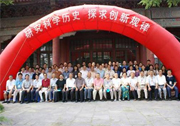| 英文摘要: |
During the 11th to 13th century, the ancient Chinese spring scissors were gradually replaced by the support shaft scissors, which are similar to the present-day scissors. Archaeological evidence indicates that support shaft scissors were found frequently in area that were reigned by the Khitans and subsequently, the Nuchens. However, in the area reigned by the Song Dynasty at the same time, the support shaft scissors were found scarcely. Support shaft scissors were probably distributed from north to south within China and from west to east in the Eurasia via the Steppe. From the perspective of the history of technology, the candle scissors that appeared as early as the Han Dynasty did not impel the wide application of the support shaft scissors. The similarity of the manufacturing technology between the west and the east easily led to the rapid spreading of the knowledge of support shaft scissors in China. |





